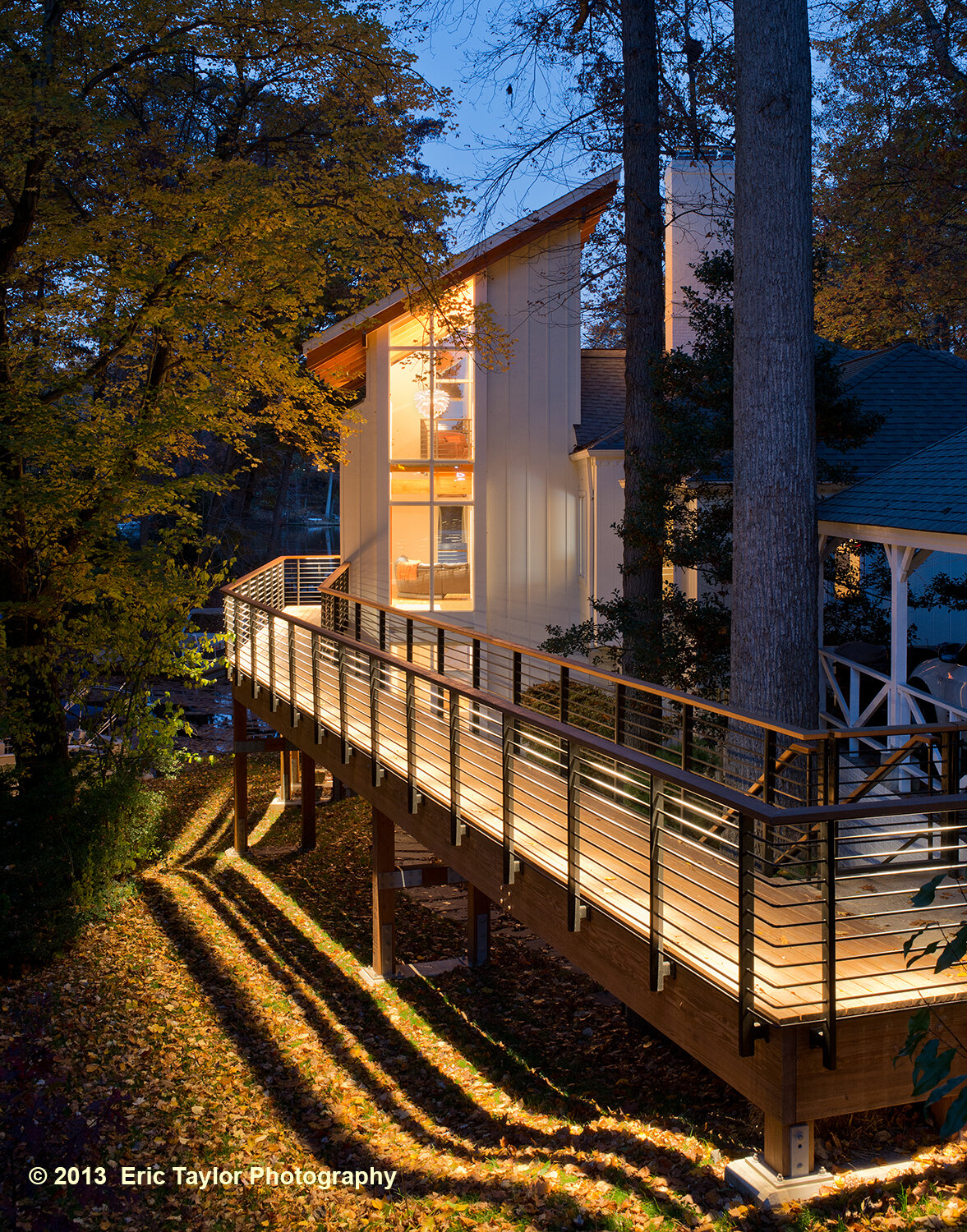Living in The 'Hood
I’ve been staring out at the lake for a while now–since before Covid-19 in fact–and thinking about how my wandering days have landed me here. So I thought to write a short bit about living in the ‘hood. When D and I first met, she introduced me to a friend from Skyline Health Club, who, not too long after, married a boy who grew up on Lake Barcroft. I knew George’s younger sister through architecture, by shear coincidence. They threw an engagement party at his mother’s house on the lake. You following this so far?
Their house was vaguely Arts & Craft, but hadn’t been touched since it was built in the 60s, or so it appeared. Sat up high and back from the water with a long, descending trail under a tree canopy wandering through azaleas and rhododendron to the shore. Most houses on the lake are unremarkable except for being in a stunning setting. George was offering boat cruises, and it was the first time either D or I had been on the lake. Beautiful day and the meandering waterway drew us in. We were of one mind: given the chance, this was somewhere we both would like to live.
Years later we put an offer on a house on Stoneybrae. The day we moved in, Jeannie came hurrying across the street to welcome us. She and Jerry had raised two boys in the same place they still lived. Five years later, when we moved across the lake to our present abode, we were sorry to leave, though we figured we’d find neighbors just as warm; Lake Barcroft is known for them.
Lake Barcroft is a hidden place not far outside DC, though light years away in spirit. If you trace a rough triangle mapped to Columbia Pike, Leesburg Pike and Sleepy Hollow Drive, it sits inside those boundaries.. No cut through, and people are forever getting lost in the neighborhood. You can only get from the north side of the lake to the south by the Woman’s Club footbridge across Holmes Run.
Maddie & Mojo
There’s a poem (of course): Coming Back to Stoneybrae The poem is ostensibly about our huskies in their senior years, Mojo and Maddie, but it’s equally a memory of Ryan holding Maddie on the ride returning home from the breeder one below-zero January day. This place where we live today is so intrinsically tied to Ryan’s memory it’s hard to think of it without thinking of him. The poem’s in the book Dogs and Disturbance.
Mojo in his prime, on board
How the hell was this Barcroft place ever established? It’s a curious story. The Barcroft dam was begun in 1913 and is now noted on Fairfax County’s website as a historic structure. The dam is only visible from Columbia Pike in the winter when the trees are bare. Built of cyclopean masonry and concrete, it is a gravity dam, meaning the weight of the stone mass is heavier than the water pressing laterally against it. Good enough for the Romans. The dam’s height was raised five feet higher in 1942 with the installation of hydraulic gates to better control the flow. In 1973, Hurricane Agnes dropped enough water on the region that it overloaded the western earthen embankment beside the dam and drained the lake. It took a bond issue issued by Fairfax County and paid for by Lake Barcroft residence to put it back. Lake Barcroft History
There’s rumor of a VW bug lying somewhere out in the lake; they’d tried driving it across one year when the lake was frozen. Almost.
Lake Barcroft was originally built as a water reservoir for the town of Alexandria, not too far downstream but eventually was considered too small–or the private water company wanted to get out of the business, one. Fairfax County (being a mostly rural place in the 1950s) declined to purchase the property for parkland, so the lake and surrounding acreage was sold to a land development company. The developers platted the property, built roads and utilities and left the individual land owners to find builders for what were in the 50s modest summer cottages, each set on its separate plateau, and a number dug into hillsides. Some close to the water, and others sitting proud overlooking the lake.
An old aerial photo shows an image of our street with one house–presently ours, built in 1953.
The stretch of Columbia Pike passing in front of the development is signed “Thurgood Marshall Highway” for Lake Barcroft’s most famous person. Tom Davis, our former US Congressman live in the community, as does our former US Senator, Jim Webb, one a moderate Republican and the other a conservative Democrat. Among other issues, Davis worked hard to get permanent funding for Washington’s Metro system during his time in office, reaching across to Maryland and DC politicos, not to mention his own party’s anti-public works leadership–reason I voted for him–he wanted to fix the transit funding that had been broken for quite a while. Politicians should swear to get some shit done—and we should hold them accoutable. Though I digress.
The house we bought was geographically challenged, which, as any architect worth salting will tell you, is why we dreamers exist–to create avoidable complications. Think of Wright’s Falling Water—why only nestle a villa in the Pennsylvania woods when you can perch it over top of a flowing stream? Our house had received one internal renovation, but otherwise was original. But you approached the house by descending an outside stair from the street, walking across a side yard to the front door, only to climb another flight of stairs to arrive at the living room and kitchen on the second floor. And it mainly looked sideways to our neighbor’s house instead of at the lake. We like our neighbor, but there’s a body of water in the other direction, already.
When we first saw it, the undeveloped view of the lake is what caught us about the place. Still does.
Early in the renovation project, we discovered it was built of rough-planed wood so the 2x4s are 2 ¼”x 4 ¼”–and the exposed floor joists in the narrow family room are 3x12s. Elsewhere I found similar sized members hidden under drywall ceilings. When we removed drywall to join the addition to the original house, we found the joists were painted white. Ditto for the wall framing we exposed. Seems the original house was a summer camp cottage—no drywall nor insulation.
Being a soul who loves wood and stuck with mental images old Kyoto temples, the addition was framed using glulam members and wood deck, all exposed. The trick is hiding the waterproofing and insulation above the exposed wood deck.
Living in a house of exposed wood gets as close to Katsura Villa as we could afford. Living under a canopy of oaks and maples, yard filled with mature azaleas and rhododendron, seems about as close to heaven as one can be, despite the Friday night helicopters circling Culmore a mile north of us.



